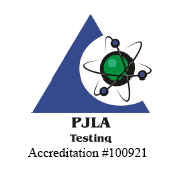This materials characterization technique is used to study the mass loss of a sample as a function of temperature. This can be used to quantify the amount of volatile matter, combustible matter, and filler content in samples. It can also be adapted to mimic environmental exposure conditions or residence time during injection molding by using unique setup parameters. Kinetic modeling of degradation profiles is also possible using literature methods.
E1131-20, D6370-99, D3850-19
This standard method is conducted to determine the composition of a material by analyzing the mass of the sample as it is run through a heating cycle. Samples are heated from room temperature to near 1,000 °C for this process. This standard includes a two-stage process in which a nitrogen atmosphere is first used to create an inert atmosphere and then once at a certain temperature, the atmosphere is made to be reactive (air) to allow for combustion. The test may be modified to run fully in a reactive (air) environment.
This standard method is conducted to determine the percent organic content, carbon black and ash of a rubber by analyzing the mass loss of the sample as it is run through a heating regime under nitrogen (inert environment). The sample is cooled mid-run, and then heated again under oxidizing (air) conditions.


